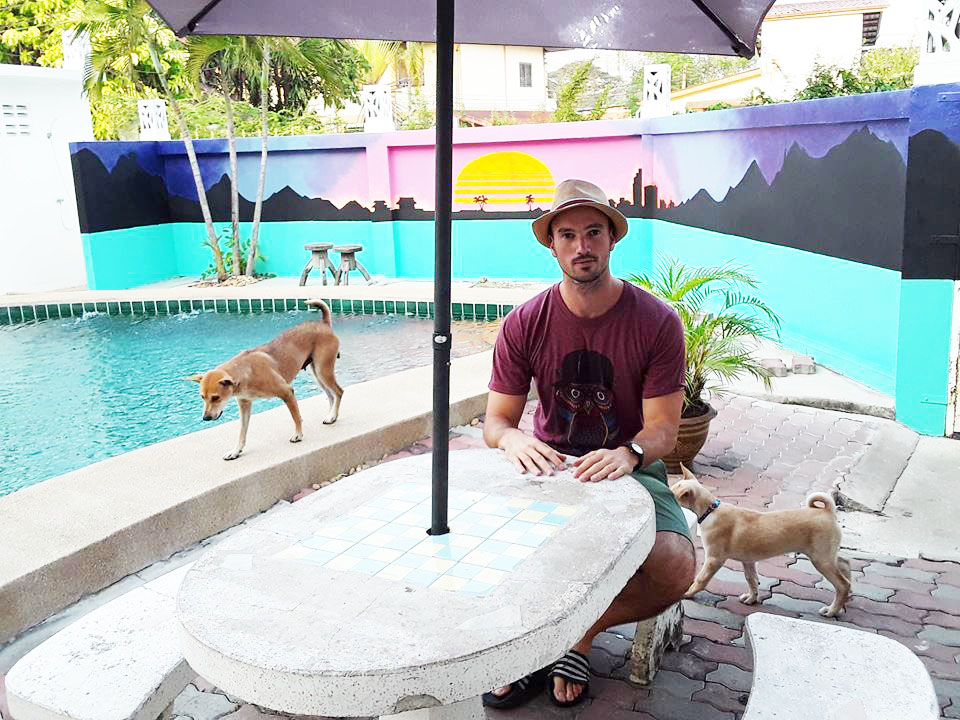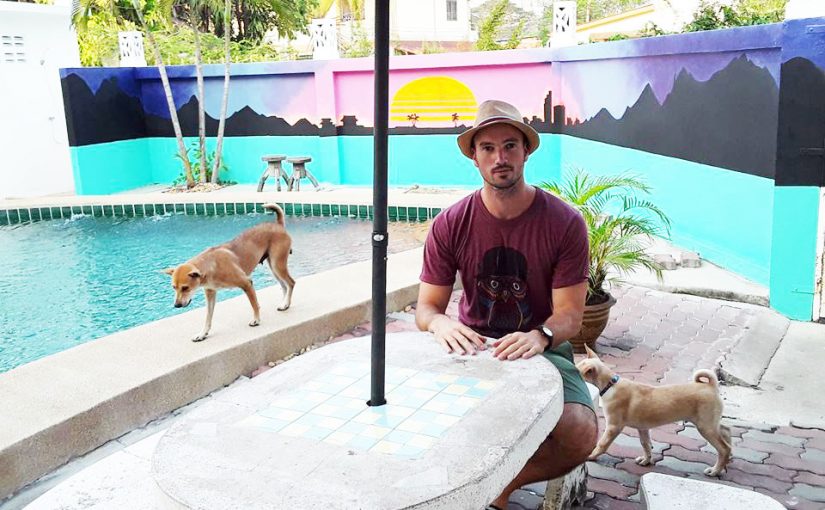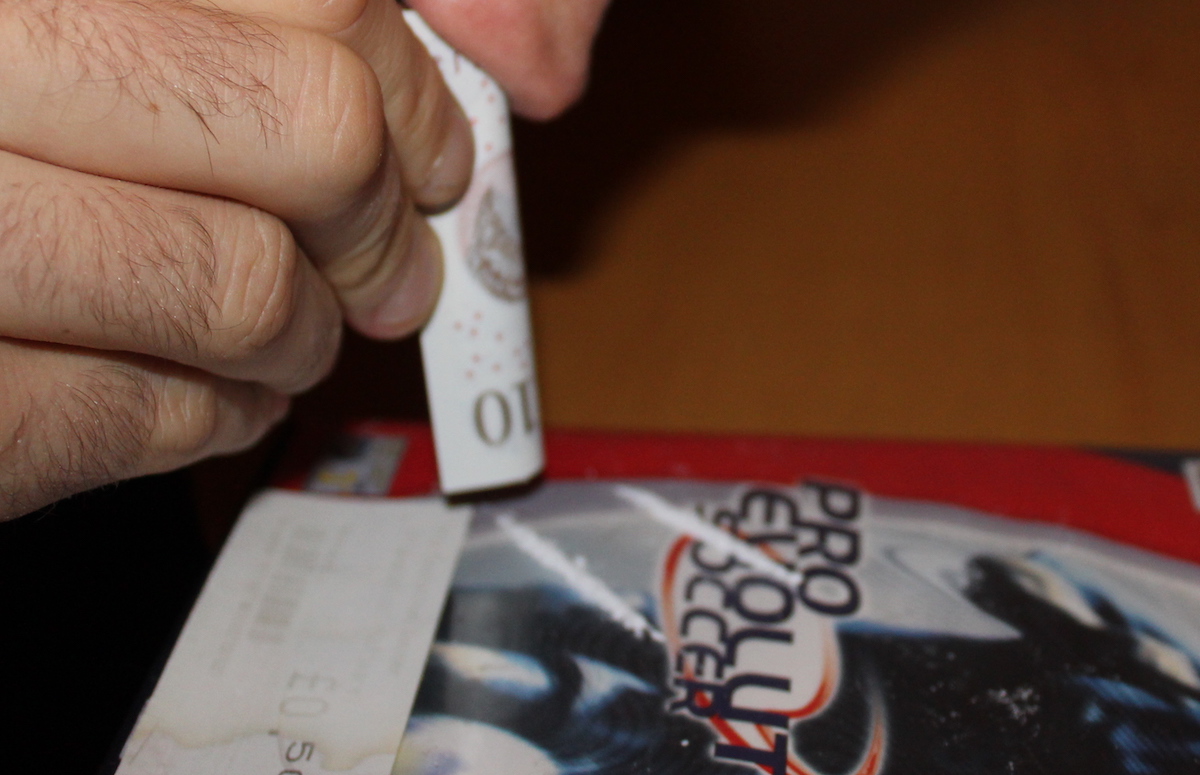I loved to get high. It was a treat that went alongside the other things I loved in life. But eventually it became the only thing I loved. I loved it more than my job, my health, my friends and my family. And then I didn’t love it, but I needed it. I needed it to get out of bed, to get into bed, to have a conversation, to conduct my increasingly sorry excuse for a life. Then I hated it but I still couldn’t stop. And I ended up wasting years trying to stop this thing that I hated.
Everything felt better and easier on heroin. I felt OK with myself, OK with other people and OK with life. It felt like my life was getting better. I got a good job as a journalist working at the UK’s biggest financial newspaper. I wore a shirt, sometimes even a tie. I got front page stories.
But that false opiate security eroded all of my boundaries. Only at home… only after work… only after midday… never before 9AM… never before work… no needles… all of that went out the window. Soon I was using from the moment I opened my eyes in the morning to the final nod of the night. And then it stopped working. I was left with all the problems I’d been fleeing in the first place, many magnitudes greater, as well as a heroin addiction.
I would wake up at 5.45AM. I’m not much into agriculture, but I’d listen to Farming Today on Radio 4 while smoking or shooting up a few bags of gear. Then I’d feel normal enough to eat some Rice Krispies, listen to Today and check up on overnight Asian markets news, which helped me feel even more normal.
I”d be at my desk for 7AM, when the UK financial reports drop, and bash out a few stories on the likes of BT and Poundland. Another frenzy of writing at 8AM when the markets opened. I’d make use of the lull around 9AM to get my head straight with another hit in the disabled toilet in the basement before the GDP and other economic numbers started coming in. Ideally, that would see me through until lunch, when I would get my daily methadone at the chemist, glancing round furtively before entering, lest any colleagues see me drink a bottle of green stuff.
One unlikely side effect of my drug use was that I spent a lot longer at the office than I needed to. My life was getting narrower, sparser and more isolated. By sitting at my desk trawling through bond market analysis late into the evening, I could pretend to myself my life was rich and meaningful.
My drug use meant my stress levels fluctuated differently to those of my colleagues. I was insulated from the stress of the job by the heroin, but I was exposed to other stresses unfamiliar to my colleagues. Unreliable dealers could ensure that, even on a quiet day at work, I was rigid with anxiety, sweating into my chair. Sometimes I had to fabricate a meeting to get out of the office for a while to score.
Maintaining my habit was my absolute priority. I earned about £2,000 a month. I spent about £600 on rent and the rest on gear. I wasn’t just using heroin – but, after payday, crack too. Most of the time I just shoplifted food, really. Strictly speaking, I could afford to buy it, but I chose not to because the more I saved on food, the more I could spend on drugs.
Unsurprisingly, my finances were fucked. That was particularly embarrassing as a financial journalist. I was writing about Tesco’s shares, then stealing from them after work. As I looked sicker I got caught more often. I was banned from the supermarkets in walking distance from my flat. I was dashing through the tube barriers ignoring angry yells on my way to the office.
Some days I sat at my desk writing about billion-dollar market moves, anxiously peering round the newsroom, wondering who would be the least embarrassing person to ask for a tenner.
When the payday loan scandal was in full swing, I spent the day writing about their nefarious practices. A colleague turned to me and said, “Don’t ever borrow from these bastards, Joel.” I was just wishing she would hurry up and leave so I could call QuickQuid on the office phone to check when my payment was due.
Inevitably, my punctuality and reliability at work eventually suffered. My colleagues were supportive and patient. They were aware of a problem, but not of its nature. I wanted to tell them the truth. I was so tired of lying and I felt like I owed them some honesty in light of their kindness. Several times I nearly did, but shame held me back. I had multiple meetings with occupational health. They suggested nutrition and lifestyle changes. HR gave me chances to pull myself together. I sincerely and desperately tried to take them. But as I tried to stop using I began to see how trapped I’d become.
Addiction hijacks the primitive part of the brain that handles survival instincts. The addicted brain sees the drug not as something pleasant or desirable, but as an absolute necessity for survival. Everything else pales into insignificance. As my addiction progressed, my warmth and empathy disappeared.
I spent much of my time alone in toilets. My flat was a 15-minute walk from my office, but sometimes I would sit in the disabled toilet in the basement all night. When my alarm went off for work in the morning I was already there. I went to Cambridge one weekend to see some old friends. I spent half the time in the multi-storey car park toilet with some street junkies I scored off. My travel was reduced to a toilet tour of England.
Even when I could see they were killing me, I still clung to drugs like my life depended on it. I overdosed, fell down a staircase and fractured my skull. The doctor said using crack would be dangerous, but I legged it out the hospital for a snowball. I felt like the thing that was killing me was crucial to my survival. If that’s not a hijacked brain I don’t know what is.

What really shocked me was how hard it is to quit. I always thought it would be as easy as just making a decision to get clean. But I made that decision so many times. I tried cold turkey. Friends and family put me up to give me a change of environment. I tried replacement programmes like methadone and Subutex. I tried stealing stacks of self-help books. My family helped fund rehab but I relapsed before I’d even left. Every relapse I sunk a bit lower and got a little more hopeless. I began to think I might never beat it.
But after years of increasingly desperate attempts to stop, I’m finally clean. Fifteen months and counting.
Everything I lost I’ve got back and then some. What makes it all the more valuable is gratitude. I don’t take anything for granted. Waking up feeling normal is a fabulous thing after years of waking up sick. I’m working in a rehab now, helping other people. That feels so good after years of doing the opposite. I just saw my parents and brother for the first time in over a year. It is wonderful to be mending those relationships after everything I’ve put them through. I’ve built new friendships and rebuilt old ones.
I still go chasing after a buzz sometimes, but now I get it from different places, like running 20km through a forest.
This isn’t supposed to be an inventory of pain and shame. What I’m trying to convey here is a sense of how quickly some neglected mental health struggles can escalate into a full-on drug addiction.
After trying for so long to fix myself with substances, I finally saw that I wasn’t even broken. I just needed some help, that for some reason I’d been too afraid to ask for. I used to have a vague idea of what a heroin addict was, and it definitely wasn’t me. I thought I had enough sense and good intentions to immunise myself against addiction. But through my experience as an addict and working in a rehab, I’ve seen that addiction can strike anyone, anywhere.
Read Joel’s blog at recovereads.com



